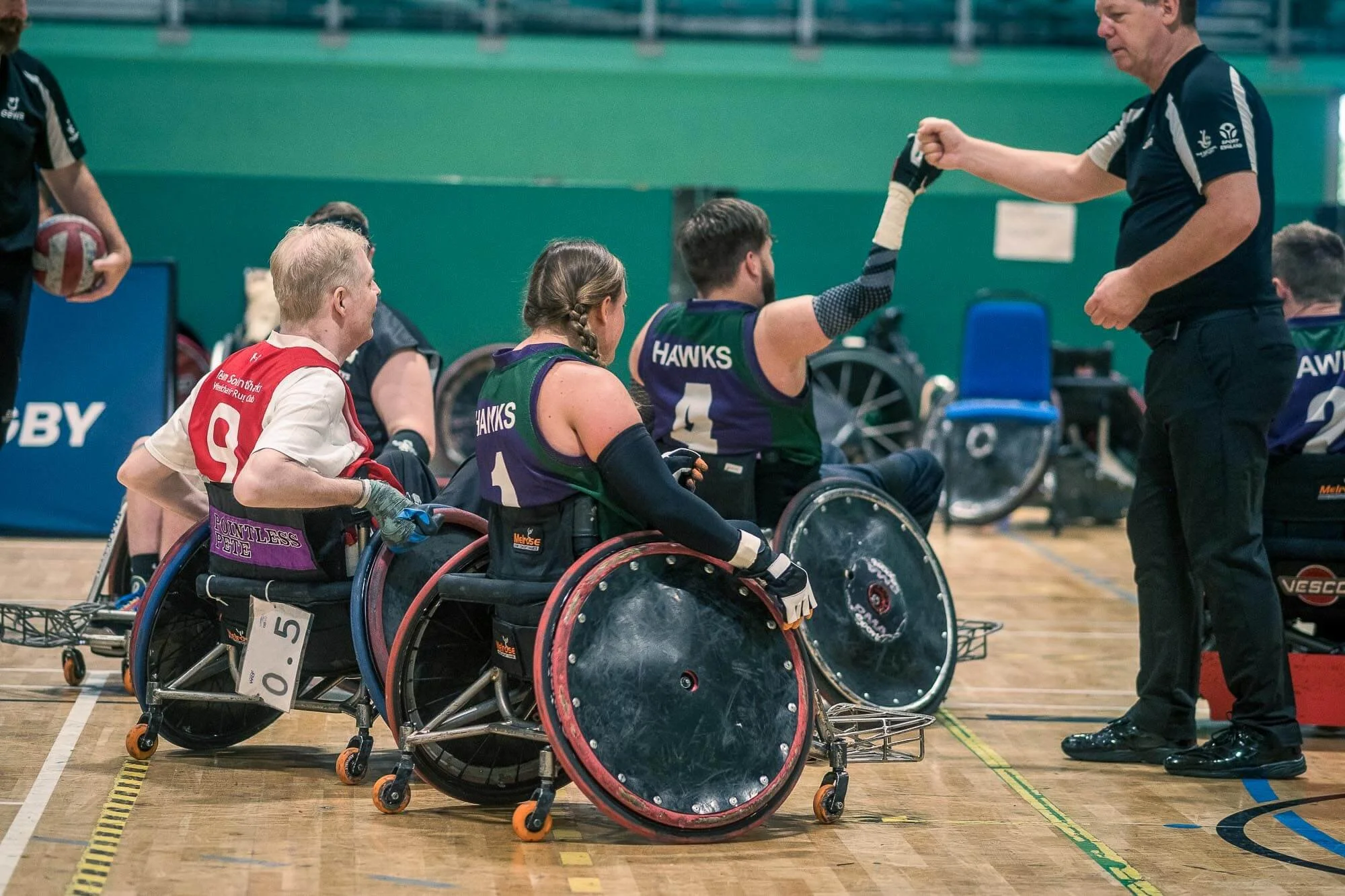

Wheelchair Rugby Fours
Wheelchair Rugby Fours - Paralympic Discipline (WRFours)
The original version of wheelchair rugby and its history.
The original version of Wheelchair Rugby was created in 1977 by five Canadian wheelchair athletes, and the sport was first called 'Murderball'. The new wheelchair sport was invented in the late 70’s in Winnipeg, Canada, by a group of tetraplegic athletes (athletes with paralysis of both the arms and legs), looking for an alternative to wheelchair basketball. The creators wanted a sport that would allow players with reduced arm and hand function to participate equally. The sport gained popularity in North America and in about two decades entered the Paralympic programme.
The first international tournament that brought together various teams from the USA and Canada was held in 1982. The sport began to branch out and Great Britain was the first team outside the continent to compete against the North Americans in a tournament in 1989 in Toronto, Canada. This proved to be a breakthrough for development internationally.
Currently, there are more than 40 countries that actively participate in the sport or who are developing programmes within their nation.
The original game was invented in the 70’s and is now known just as wheelchair rugby, however, it’s often referred to as Quads, Fours, Paralympic discipline and murderball.
10 Things You Need To Know To Watch Wheelchair Rugby
Wheelchair Rugby is played on a basketball court with up to 12 players on the squad and a maximum of 4 players on the court at any one time.
Teams are made up from both women and men.
A Maximum of 8 points on court per team. All players are classified from 0.5 to 4.0 (0.5 to 3.5 internationally) on a player's points scale. Assessed on the players functionality and mobility.
Wheelchairs – there are two types 1. Defensive Chair has an enlarged pick bar to aid with pinning the opposition 2. The Attacking Chair has a small pick bar, which makes the chair shorter and nimbler.
Tip Off – the game is commenced by two opposing players competing for the ball via tip off, like basketball. The ball is round like a volleyball with a textured surface to help with grip and is over inflated so that it increases the bounce.
A team scores by a player crossing the try line when in control of the ball. Two casters must cross the line for the try to count.
Inbounding – this is how the game is restarted. The player has 10 seconds to inbound the ball, their chair must be fully behind the line.
The Team must get the ball out of their half within 12 seconds and bounce or pass the ball every 10 seconds, with a total shot clock time limit of 40 seconds.
Contact is encouraged; however, you cannot spin the opponent's chair by hitting behind the rear axle or touch the opponent with your body, both resulting in a penalty. When a player is tipped off his wheels the support staff have 1 minute to get the player back onto their wheels.
Sin Bins – 1 minute in the bin – the player can return to court after 1 minute or when the opposition scores a try (not a penalty try) - Flagrant Foul – 2 minutes in the bin or three tries.
Who is Eligible to Play?
To be eligible to play the Paralympic discipline of wheelchair rugby, athletes must have an impairment which affects their arms and legs. Many athletes have spinal cord injuries, with full or partial paralysis of their legs and partial paralysis of their arms. Players with other impairments such as cerebral palsy, muscular dystrophy, amputations, polio, and other neurological conditions may also be eligible to play.









